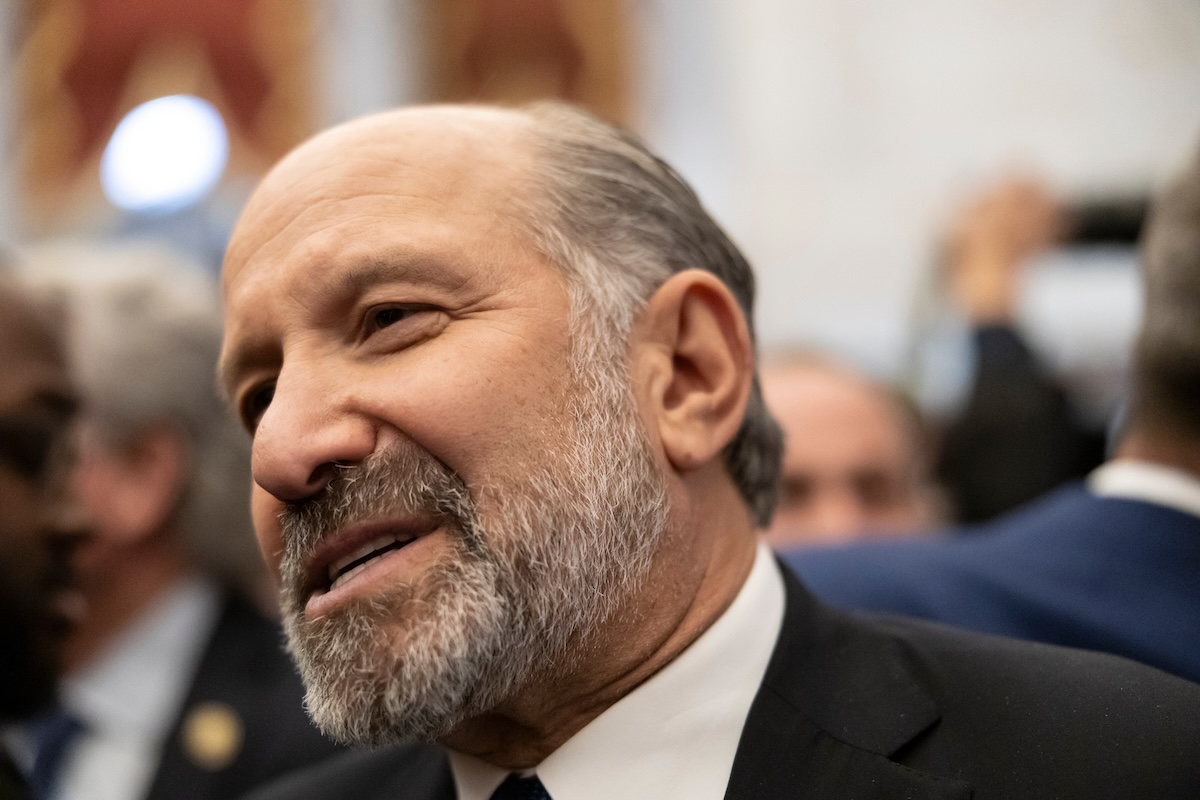
U.S. Commerce Secretary Howard Lutnick doubled down Wednesday on the Trump administration’s demand to keep at least 50% of all AI computational power on American soil. This could hand a major edge to a handful of U.S.-based tech giants, analysts say.
Speaking during a congressional hearing, Lutnick also confirmed that the administration is in the process of renegotiating semiconductor grants originally issued under the Biden administration.
Keeping half of AI compute in the U.S. is “vital” to national security and domestic tech independence, Lutnick said.
Financial analyst Shay Boloor called the policy “a clear win” for four stocks: Nvidia (NVDA), Broadcom (AVGO), Taiwan Semiconductor (TSM), and Palantir (PLTR).
He dubbed Nvidia “the engine powering U.S. AI compute,” Broadcom “the glue holding AI infrastructure together,” TSMC “the beating heart of U.S. AI chip production,” and Palantir “the operating system for AI deployment.”
COMMERCE SECRETARY LUTNICK JUST SAID 50% OF AI COMPUTE MUST BE BASED IN THE U.S.
undefined Shay Boloor (@StockSavvyShay) June 4, 2025
• $NVDA -- The Engine Powering U.S. AI Compute
• $AVGO -- The Glue Holding AI Infra Together
• $TSM -- The Beating Heart of U.S. AI Chip Production
• $PLTR -- The OS for American AI Deployment
Despite being headquartered in Taiwan, TSMC has a growing U.S. footprint with its manufacturing hub in Arizona and plans for expansion.
Collectively, the four mega-caps now command more than $5.8 trillion in market value, with Nvidia briefly surpassing Microsoft this week to become the world’s most valuable company.
Trump, Xi Speak, but no clarity yet
Lutnick’s push to shore up domestic AI infrastructure comes as U.S.-China trade talks remain gridlocked. The current tariff truce is set to expire in August, and concerns are mounting that another wave of duties could follow.
President Trump acknowledged as much Wednesday on Truth Social, calling Chinese President Xi Jinping “very tough, and extremely hard to make a deal with.”
Tensions appeared to ease after the two leaders spoke by phone Thursday, according to China’s foreign ministry. The call came shortly after Treasury Secretary Scott Bessent said a breakthrough would likely only happen through direct talks between Trump and Xi.
For now, Wall Street remains optimistic. The S&P 500 has rallied nearly 20% since bottoming out on April 8, just days after Trump announced his “Liberation Day” tariffs on Chinese goods.
But the bigger picture remains murky. As talks with China drag on, the Trump administration has also escalated its rhetoric against Europe, floating additional tariffs targeting the EU.
Macquarie analyst David Doyle warned investors not to let their guard down. Despite temporary ceasefires, “the trade war is still a substantial headwind,” he said.
Your email address will not be published. Required fields are markedmarked